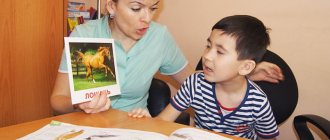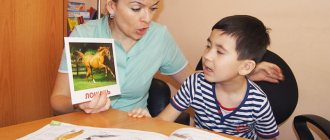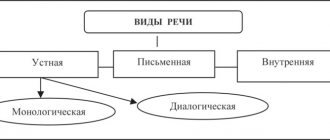How to develop attention in children with mental retardation
In any aspect of human life, attention is important, which allows you to learn new things, concentrate and perform actions efficiently. This affects everyday household tasks, communicating with people, learning and much more. Without concentration, thought processes are inhibited, because the brain does not receive all the information about the object. Accuracy, clarity, and diligence are also impossible.
Therefore, with the development of concentration, all intellectual, physical and social skills improve. Patients with mental retardation can feel the full importance of this aspect, because they have big problems with it. However, it can be successfully combated.
What is attention: theory and classification
Before moving on to the problem of concentration in ZPR, it is necessary to understand the phenomenon as such.
Attention is a selective and controlled perception.
It not only stimulates and simplifies cognition, but also has a huge impact on the formation of attitudes towards the object of observation.
Sustained attention is the key to a healthy psyche, which is expressed in calmness.
This is due to the fact that if it is possible to concentrate on objects, a person orients himself in the world around him, can evaluate objects and understands his place among them. A unique feature of an attentive person is his complete concentration, the ability to perceive the smallest details. This occurs due to a decrease in concentration on all other subjects. Therefore, it is quite easy to switch between objects, or not pay attention to anything at all.
This process is closely related to others: hearing, vision, thoughts and actions. Some psychologists believe that concentration is not a separate human ability, but only a parameter, a property of these processes. The particular importance of this ability is noted by teachers who understand that in order to remember something you must first concentrate. Therefore, in addition to standard skills such as reading and writing, there is intensive attention training. For this purpose, varieties and properties are distinguished:
| Varieties | Properties |
| Voluntary - there is a volitional effort, tension | Concentration |
| Post-voluntary – there is a conscious choice, but there is no tension | Volume |
| Sequential | Concentration |
| Involuntary (passive) – established regardless of a person’s desire | Distribution |
| sensory-perceptual (external) – knowledge of the surrounding world | Switchability |
| Constitutional origin | Absent-mindedness |
| Intellectual (internal) – self-knowledge | Sustainability |
| Motor – emphasis on movement and action |
In children with mental retardation, attention retains the same functions, but has some features. For example, the memory is much smaller. Stability, that is, the ability to concentrate on one thing for a long time, affects only interesting things for a child with mental retardation. There is practically no distribution, that is, the ability to do several things at the same time. In children with delayed mental development, the speed of switching between activities is reduced.
Negative factors of the production environment, causes
Other possible causes of mental retardation in children may include pedagogical neglect. The category of educationally neglected children is also heterogeneous. Neglect can be due to various specific reasons and can take different forms. In the psychological and pedagogical literature, the term “pedagogical neglect” is most often used in a narrower meaning, considered only as one of the reasons for school failure. As an example, we can refer to the joint work of domestic psychologists A.N. Leontyeva, A.R. Luria, work by L.S. Slavina and others.
In connection with the emergence of middle and high schools for children with mental retardation in the system of general education and special schools, there is a need to study the characteristics of adolescence. Thus, based on the studies conducted (K.S. Lebedinskaya, M.M. Raiskaya, G.V. Gribanova), two groups of adolescents with mental retardation are distinguished, each of which has its own specifics: adolescents with mental retardation without behavioral deviations; adolescents with mental retardation and behavioral problems.
In socio-psychological studies (BC Shaumarov, L.V. Shibaeva), a cross-cultural study of the role of socio-psychological factors in the development of children with mental retardation was carried out. The works concerned the analysis of the influence of the family, social status, educational level of parents and the nature of relationships in the family. It should be noted that the influence of the family is manifested at all levels of the child’s personality development.
The considered areas of study of ZPR explore the problem from different points of view. Nevertheless, the integration of approaches would greatly enrich the content of a systematic study of the problem, and therefore would determine the prospects for solving it for the theory and practice of special psychology and pedagogy. In addition, within the framework of an integral assessment of the ZPR, the idea of distributing priorities (biological and social) in the formation of the ZPR would be embodied.
To determine the factors influencing the formation of mental retardation, and for the subsequent assessment of psychological adaptation and the dynamics of intellectual development of children with mental retardation, a comprehensive comprehensive assessment of the status being studied is necessary.
Less studied in science is the phenomenon of mental retardation as a special type of mental development, with characteristic immaturity of individual mental and psychomotor functions or the psyche as a whole, formed under the influence of biological and socio-psychological factors.
Features and disturbances of concentration in children with mental retardation
In addition to the differences already mentioned, a main disorder can be noted in children with mental retardation – lack of attention. It is expressed in absent-mindedness in activity and in the perception of information. Because of this, even the slightest irritant can confuse them and make them lose the essence of what is happening. In addition to weak concentration, selectivity is characteristic. For example, children with mental retardation will give preference to games rather than studies. In this regard, it can be difficult to motivate a student to study, and performance can either sharply increase or decrease. Different types of activities require different forms of concentration, which suffer in different ways with mental retardation. Both a complex delay and a single parameter are possible. This can be seen in the baby. If he has difficulty with mathematics and counting, then there are problems with volume. If with reading and literacy, then with distribution. If all skills suffer, then they speak of inattention in general.
“It looks like it doesn’t look like it”
The game teaches children to carefully examine objects and identify their common and distinctive features.
Necessary equipment: a couple of similar toys, for example: a tractor and a car, a doll and a tumbler.
◈ How to play: invite your child to compete to see who can find similar toys faster. Find them together and ask the child to first say how they are similar (for example: the bunny and the bear have fluffy legs, ears, tails, eyes, etc.), and then how they differ from each other (the bear is big, the ears are small, brown ; bunny - small, white, long ears).
◈ Let’s complicate it: take two pairs of toys that are more similar to each other - a large and a small ball, two cars of different brands, etc.
◈ We consolidate: you can play the game “Eagle Eye” on the road, in a store, at the dacha - who will find the most similarities and differences in clothes, vegetables, trees, etc. For example, compare the leaves of poplar, birch, maple, larch. The one who finds the most similarities and differences among them will win. And if you “don’t notice” something, but the child does, he will get real pleasure from the game. Don’t be afraid to play along with your little “I want to know it all” sometimes!
Diagnosis of attention in children with mental retardation
Concentration problems are easy to spot. This is usually done during an examination for mental retardation. Diagnosis of attention is carried out by a pediatrician, psychologist, speech therapist, defectologist, psychiatrist and other specialists. They explore general mental abilities, the emotional-volitional sphere. Based on the results, a conclusion is made and recommendations for correction and development are given.
Development and correction of concentration in children with mental retardation
Development should take place against the background of the child’s general rehabilitation. This is done both by the parents themselves and by involved speech therapists, speech pathologists, pediatricians and psychiatrists. When choosing an educational institution, it is recommended to pay attention to specialized kindergartens, type VII schools and correctional classes. Correction of attention for mental retardation should begin as early as possible and continue as long as possible. When learning, there are recommended methods that should be followed regardless of the material being taught:
- dosage of information;
- visibility;
- repeated repetition;
- change of type of activity.
All this is closely related to the attention characteristics of preschoolers with mental retardation. For example, if there is no dosage, the baby will quickly get tired and concentration will weaken. Without clarity there will be no understanding and interest. Repeated repetition compensates for the lack of attention in mental retardation and allows you to memorize and automate the material. Changing activities along with physical activity will keep the child in good shape, which will have a beneficial effect on his concentration. To maintain the child's interest, it is necessary to actively gesture. This will help compensate for problems with speech development and verbal perception. In this way, it is possible to distract the student from external stimuli, which will certainly distract the child with mental retardation from the lesson.
"Plant mysteries"
The game helps to form voluntary attention and conceptual thinking.
Required equipment: forfeits.
◈ How do we play: is the whole family gathered together? Then let's play! The presenter (at first it will be an adult) points to each player in turn and says: “Flower, tree, fruit, flower...”.
◈ The player on whom the counting stops must quickly name the plant, in this case a flower (for example, chamomile or rose), etc.
◈ The answer is correct - the game continues. If the answer is incorrect or the name is repeated (delayed response is also considered a violation), then the player gives his forfeit to the presenter and is eliminated from the game.
◈ The game continues until one player remains. He and the presenter are playing out what each “fanta” should do - sing a song, dance, crow... That will be fun!
◈ Let's consolidate: this game can be played both at home and on the road (if you are not driving). Change the theme: fish, bird, animal or wood, glass, iron. Imagine!
◈ Let’s make it more complicated: a child can be the leader.
Exercises to develop attention
There are a large number of development methods. When using games in practice, it is permissible to change the conditions and adjust them to the child’s abilities. Some are made individually, others are intended for a group of children. Exercise No. 1 A group of children is shown a set of words or pictures in an accessible way (cards, pictures, monitor). The one who can write down (remember) the most wins the competition. You can also award a victory for literacy. Mandatory reward for success. Exercise No. 2 The child is presented with a set of pictures that need to be remembered. You need to name as many items as possible, preferably in the correct sequence.
Exercise No. 3 1 minute is timed and during this time the child is asked to name as many objects around him as possible. You can make it more complicated and name objects, for example, only yellow ones, or those that begin with the letter “O”. In addition, it is useful to let students solve riddles, labyrinths, and quests. For example, arrange a game in which the child must look for clue notes, and at the end a prize awaits him. Regular school exercises also develop concentration. Mathematics, reading, dictations, memorizing poetry. To prevent your child from losing interest, it is recommended to turn intellectual exercises into games to develop attention. To do this, a story is thought out in advance (travel, transformation into a magician) during which the child will complete tasks.
"We decorate the Christmas tree"
Necessary equipment: New Year's toys.
◈ How to play: are you decorating a Christmas tree? Play with your baby. Invite him to choose from 4-6 balls exactly the same (in color, size, design) as the one in your hands. Or choose the same cracker as yours, or a serpentine of the same color. Or maybe you have New Year's houses or bunnies - take your pick. Change roles, make mistakes, let the child correct you.
◈ Fastening: what about New Year’s gifts? Let the child choose the same one from 10 candies as you have in your hands. Switch roles. Remember the New Year's poems along the way, there are many of them.
How to practice at home
You can work on developing attention in children with mental retardation not only with specialists, but also at home with their parents. The emphasis is on regular repetition of similar tasks that require increased concentration. A good exercise with a text in which the child must cross out the specified letter (for example, all the letters “P”). You can vary the difficulty using font size, text length, or running time. You can start with 1 minute, gradually increasing by 30 seconds and reaching a total lesson duration of 10-15 minutes. Drawing is also used. For example, redrawing simple objects, coloring or shading geometric shapes. You can offer to find differences in pictures; there are even special applications for this on computers or mobile phones. Opinions differ on whether a computer can be used for development or games for children with mental retardation.
| Pros | Cons |
| Wide selection of games | No communication with people |
| Opportunity to join special courses and interactive games that develop cognitive abilities | Sedentary and sedentary exercise option |
| A computer or phone will attract a child’s attention thanks to the colorful and mobile elements | The child does not develop fine motor skills |
| Possible addiction and subsequent refusal to practice “live” |
Conclusion
Attention is the most important component of human life, which affects the success of all actions. Children with mental retardation have their own characteristics that need to be taken into account. The general indicators are quite weak, but inattention prevails. Such children are easily distracted from their activities even by a trifle. This is why it is so important to conduct additional classes.
Moments aimed at developing concentration can be supplemented with already familiar exercises and tasks. This can be done by complicating the conditions, simply by forcing the child to look for individual elements. The classes maintain consistency and should not be tiring. With a regular exercise schedule, improvements will soon be noticeable and full recovery is possible. It is recommended to contact specialists who will help you create a list of exercises that are suitable for a particular child with his or her characteristics.








